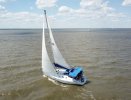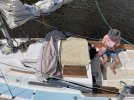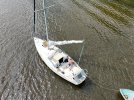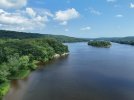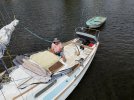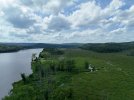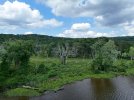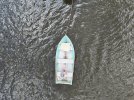I frequently fly my MPP from moving sailboats. There are several important things to do that are very important.
1. Launch and recover from the back of the boat. Then when the drone goes to hover it safely separates from the boat.
2. get a rigid handle. Mine is a GoPro type mount and I just have a 1” wooden down screwed into it (see photos). When you fly the drone up to the back of the boat you can just snatch it out of the air. I think it is very dangerous to hand catch from a moving boat without a rigid handle
3. After you recover the drone, turn it sideways. At least in the MPP this shuts down the motors because it thinks it crashed.
4. I can set the MPP to automatically update the home point when you have moved a certain distance away. It still does not fly back to you but it won’t be trying to fly as far away.
5. My MPP has a setting for a max distance from the launch point. You MUST turn this off, otherwise your drone might suddenly stop.
6. Turn off obstacle detection as it will prevent the drone from getting close enough to recover. My MPP only has forward obstacle detection, so I just fly it backwards to the boat. Flying backwards actually makes lateral control easier (right stick moves drone right).
7. Come home when battery is at 50% to give you lots of time to make approaches to the boat.
8. When you first try this, have 1 person dedicated to catching the drone, and 1 person flying the drone, neither of who are needed to operate the boat. When you get proficient, you can fly and catch by yourself.
9. I use Active Track to have the drone follow the boat and stay pointed at the boat. On the MPP and DJ Go4 app it works but is not great. When i fly ahead of the boat, the boat catches up to the drone so I still have to keep backing the drone away. The speed is limited to about 15-20 knots in active track so be aware of the combination of wind speed and boat speed.





